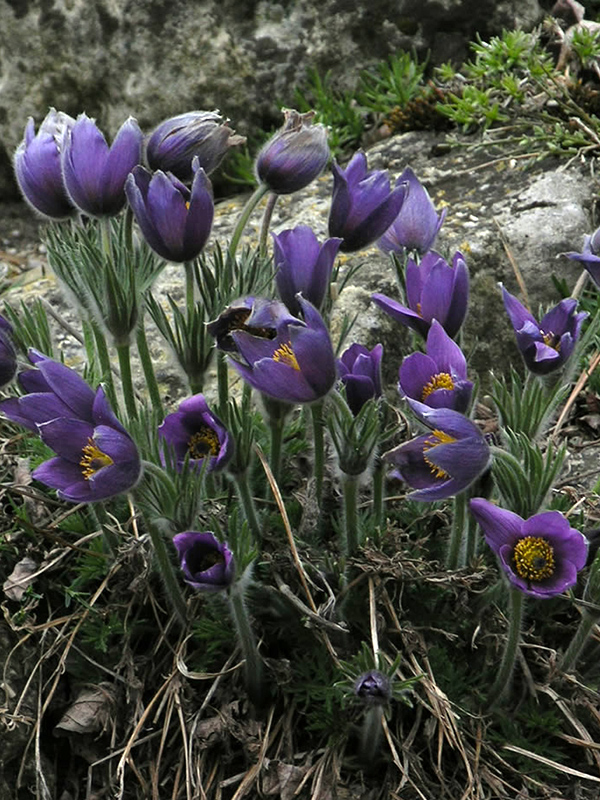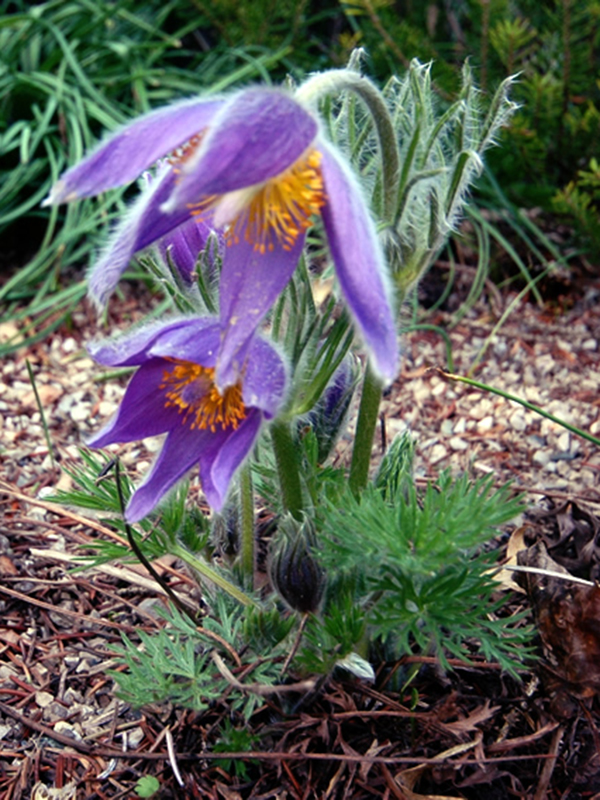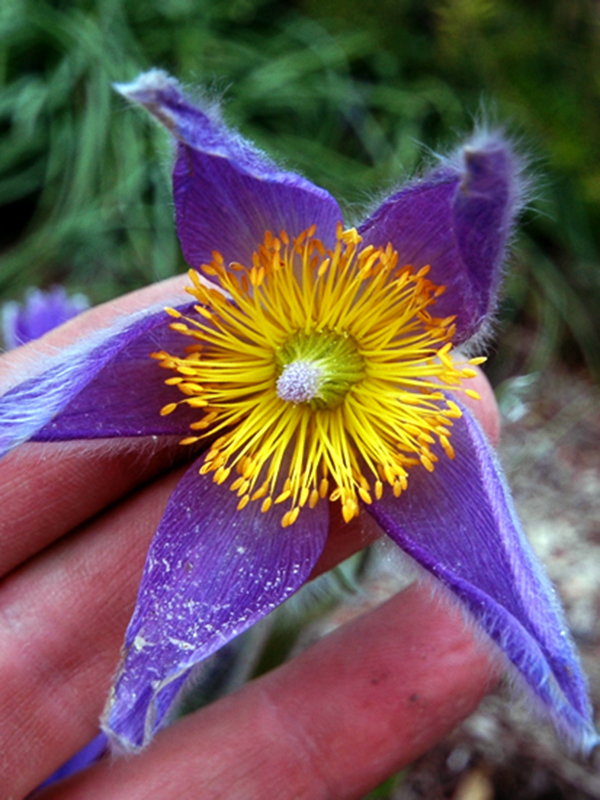
Perennials, Weeds > Pulsatilla > Pulsatilla vulgaris > Pulsatilla vulgaris
Pulsatilla vulgaris
Pasque Flower
Origin: Native to Great Britain and western France to Sweden, eastward to Ukraine.
| Family |
| Ranunculaceae |
| Genus |
| Pulsatilla |
| Species |
| vulgaris |
| Category |
| Perennials, Weeds |
| Synonyms |
| Anemone pulsatilla |
| USDA Hardiness Zone |
| 7b - 8a |
| Canadian Hardiness Zone |
| 7 |
| RHS Hardiness Zone |
| H5-H7 |
| Temperature (°C) |
| -15 - (-9) |
| Temperature (°F) |
| 5 - 15 |
| Height |
| 50 cm |
| Spread |
| 50 cm |
Photographs
Description and Growing Information
Flowering Period
| General Description |
| A clump-forming perennial with a sheen of silvery hair, purple flowers, and fluffy clusters of plume-like seedheads. |
| Landscape |
| Wonderful container or rock garden plant. |
| Cultivation |
| Easily grown in average, medium, well-drained soil in full sun to part shade. Prefers rich, humusy soils and cool, moist climates. |
| Shape |
| Clump-forming habit. |
| Growth |
| Medium |
| ID Characteristic |
| Distinguished from Anemone by its feathery style. |
| Pests |
| Watch for slugs. |
| Habitat |
| Found in British chalk downland and occasionally in alpine meadows. |
| Leaf Description |
| Leaves are fern-like and light green, finely dissected and covered in silvery pubescence. |
| Flower Description |
| Flowers are bell-shaped and solitary, purple in colour. |
| Fruit Description |
| Fruit is a collection of plume-like seedheads that appear in fluffy clusters. |
| Propagation |
| Propagate by seed of from root cuttings taken in winter. |



